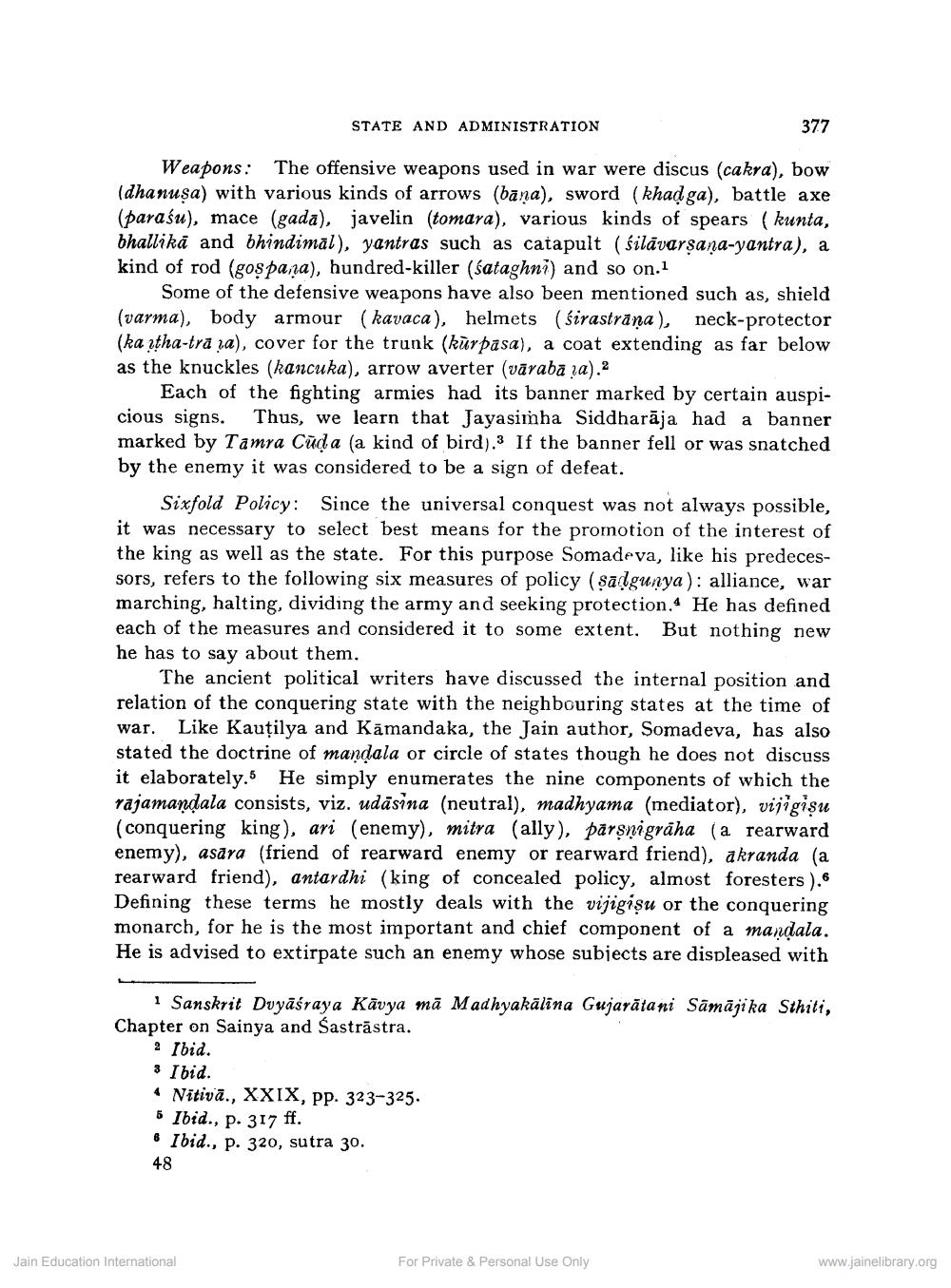________________
STATE AND ADMINISTRATION
377
Weapons: The offensive weapons used in war were discus (cakra), bow (dhanusa) with various kinds of arrows (bana), sword (khad ga), battle axe (parašu), mace (gada), javelin (tomara), various kinds of spears ( kunta, bhallikä and bhindimal), yantras such as catapult (silavarşana-yantra), a kind of rod (gospa,a), hundred-killer (sataghni) and so on.1
Some of the defensive weapons have also been mentioned such as, shield (varma), body armour (kavaca), helmets (sirastrāna), neck-protector (ka rtha-traja), cover for the trunk (kūrpasa), a coat extending as far below as the knuckles (kancuka), arrow averter (vāraba ža).2
Each of the fighting armies had its banner marked by certain auspicious signs. Thus, we learn that Jayasimha Siddharāja had a banner marked by Tamra Cūd a (a kind of bird). If the banner fell or was snatched by the enemy it was considered to be a sign of defeat.
Sixfold Policy: Since the universal conquest was not always possible, it was necessary to select best means for the promotion of the interest of the king as well as the state. For this purpose Somadeva, like his predecessors, refers to the following six measures of policy (sadgunya): alliance, war marching, halting, dividing the army and seeking protection.4 He has defined each of the measures and considered it to some extent. But nothing new he has to say about them.
The ancient political writers have discussed the internal position and relation of the conquering state with the neighbouring states at the time of war. Like Kautilya and Kāmandaka, the Jain author, Somadeva, has also stated the doctrine of mandala or circle of states though he does not discuss it elaborately.5 He simply enumerates the nine components of which the rajamandala consists, viz. udāsina (neutral), madhyama (mediator), vijigisu (conquering king), ari (enemy), mitra (ally), pārsnigrāha (a rearward enemy), asara (friend of rearward enemy or rearward friend), akranda (a rearward friend), antardhi (king of concealed policy, almost foresters ).6 Defining these terms he mostly deals with the vijigisu or the conquering monarch, for he is the most important and chief component of a mandala. He is advised to extirpate such an enemy whose subjects are displeased with
1 Sanskrit Duyāśraya Kāvya mā Madhyakālīna Gujarātani Sāmājika Sthiti, Chapter on Sainya and Sastrāstra.
2 Ibid. 3 Ibid. • Nitivā., XXIX, PP. 323-325. 6 Ibid., p. 317 ff. 6 Ibid., p. 320, sutra 30. 48
Jain Education International
For Private & Personal Use Only
www.jainelibrary.org




